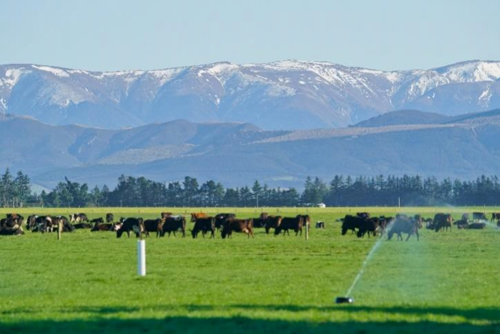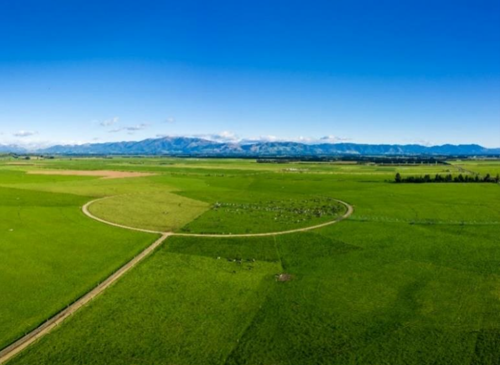Dairy Holdings sustainability framework criteria for this pillar focuses on biodiversity, GHG emissions, soil quality and water use. In order to get the most out of our pasture we need to optimise fertliser and irrigation to maximise growth, while taking into consideration our GHG emissions and ensuring our water and electricity usage is as efficient as possible.
Dairy Holdings sustainability framework criteria for this pillar focuses on biodiversity, GHG emissions, soil quality and water use. In order to get the most out of our pasture we need to optimise fertliser and irrigation to maximise growth, while taking into consideration our GHG emissions and ensuring our water and electricity usage is as efficient as possible.
Providing our customers with the highest quality food from 100% pasture was a significant milestone for the Group and it continues to pave the way to the premium product image which is one of the six major strategic goals for the Group. We have achieved this by increasing the pasture harvested year on year as we work towards our goal of 14 tonne of dry matter harvested per hectare across all of our Canterbury and Southland properties.
|
|

|
GHG Emission Reduction
Where there is remaining ineffective land, we have implemented a tree planting initiative resulting in these areas being targeted for riparian, sequestration, and biodiversity planting.
An overall plan is to be developed with objectives, areas, lengths and management practices. This planting initiative supports our overall goal to reduce our environmental impact by reducing our methane emissions and eliminating our long-lived carbon emissions from the reduction of nitrous oxide gas emissions and offsetting. This will ensure our water ways are pristine.
To help achieve these targets we have been committed to reducing our nitrogen per hectare impact. Our dedicated focus in this area has resulted in the Group surpassing our goal of reducing nitrogen applications below 200kg per hectare earlier than expected with 176 kilos per hectare applied for the 2022 season. Our methane per hectare and GHG emissions is measured using Overseer modelling. This is something Dairy Holdings continues to strive to improve.
|
|
The Table below shows an overall summary of Overseer modelling. The balance of 2022 data is still provisional and is being finalised with the completion of all dairy support properties.
Total GHG
| Overseer |
Farms |
Total Area ha |
Total GHG Emissions |
Total Methane Emissions |
| eCO2 Kg |
eCO2 kg/ha |
eCo2/kgMS |
eCO2 Kg |
eCO2 kg/ha |
eCo2/kgMS |
|
Dairy Farms
|
| YE 2022 |
60 |
17,230 |
196,363,319 |
11,397 |
12.7 |
129,429,968 |
7,512 |
8.4 |
| YE 2021 |
59 |
16,404 |
196,863,482 |
12,001 |
11.9 |
130,710,668 |
7,968 |
7.9 |
| YE 2020 |
59 |
16,404 |
198,690,062 |
12,112 |
12.3 |
128,821,871 |
7,853 |
8.0 |
| YE 2019 |
55 |
15,416 |
189,914,406 |
12,319 |
11.5 |
126,506,118 |
8,206 |
7.6 |
|
Dairy Support Farms
|
| YE 2022 |
7 |
2,323 |
24,705,104 |
10,635 |
n/a |
15,493,495 |
6,670 |
n/a |
| YE 2021 |
17 |
6,061 |
65,966,173 |
10,884 |
n/a |
41,818,635 |
6,900 |
n/a |
| YE 2020 |
14 |
6,061 |
58,061,300 |
11,653 |
n/a |
38,242,509 |
6,310 |
n/a |
| YE 2019 |
16 |
5,362 |
47,060,305 |
8,777 |
n/a |
31,513,084 |
5,877 |
n/a |
|
|
The GHG composition for the Group comprises:
- Methane (66%)
- Nitrous Oxide (23%) and
- Carbon Dioxide (11%)
Nitrous oxide is a potent long lived GHG. Although only a small component of the earth’s atmosphere, nitrous oxide is approximately 300 times more effective at trapping heat that carbon dioxide. To date we have been working on several strategies to reduce GHG, including reducing nitrogen applications, focus on correct soil fertility, 100% pasture focus with minimal supplementary feed, optimised pasture production, irrigation and fertiliser application, improved fertility, early culling of stock, along with planting and improved infrastructure.
He Waka Eke Noa is recommending the Government introduce a farm-level split-gas levy on agricultural emissions with built-in incentives to reduce emissions and sequester carbon. It is expected that the Government will decide on this in November 2022. After this date we will be in a better position to determine the most appropriate direction and strategy for Dairy Holdings.
|
Refrigeration technology
The collaboration with Coolsense and the upgrading of 50 refrigeration units to the most advanced “snap chilling” refrigeration technology will result in improved milk cooling efficiency on farm, a reduction in electricity consumption and replacement of the previous refrigeration gases with a 4,000 times greater global warming potential than carbon dioxide compared with modern refrigerant gasses at 400 times.
The Group has been able to access Green loan funding of this project through DLL, a subsidiary of Rabobank.
Sustainable electricity is also generated on our Fereday Island property via four hydroelectric turbines. Any electricity not utilised by the farm is exported back to the grid. In addition, solar panels are installed at the Riverside, One Arrow and Fereday dairy sheds to supplement supply.
|
|
The CropX moisture sensor technology has been a major component in changing the way we utilise and manage our irrigation water resource. The expectation is that this technology will result in a water efficiency improvement across the Group’s irrigated properties. Water volume used is dependent upon the seasonal influence of wet/dry summers.
We have also partnered with CropX to roll out an upgrade to our effluent fail safe systems. 10 units have been installed. Following this initial trial period, it is hoped these units will be rolled out across the wider Group.
This next year we will be monitoring our dairy shed water usage in order to set targets for future efficiency gains.
|

|
Farm Environment Plans
The Healthy Land and Environment pillar’s focus can be supported further by our Farm Environment Plans (FEP).
As a Group, we want to see all farms with an A grade FEP. Currently we have farms in each of the following grades.
| A Grade |
B Grade |
C Grade |
D Grade |
| 53 |
3 |
- |
- |
The three farms with ‘B’ grades were either not audited in 2021/22 or are undergoing major development projects.
For the 2021/22 season there were six environmental non-compliance matters compared to eight in 2020/21.
Other sustainability development goals and reporting concepts will be investigated and considered if appropriate in the future as this report evolves and wider audiences may be included.
|



